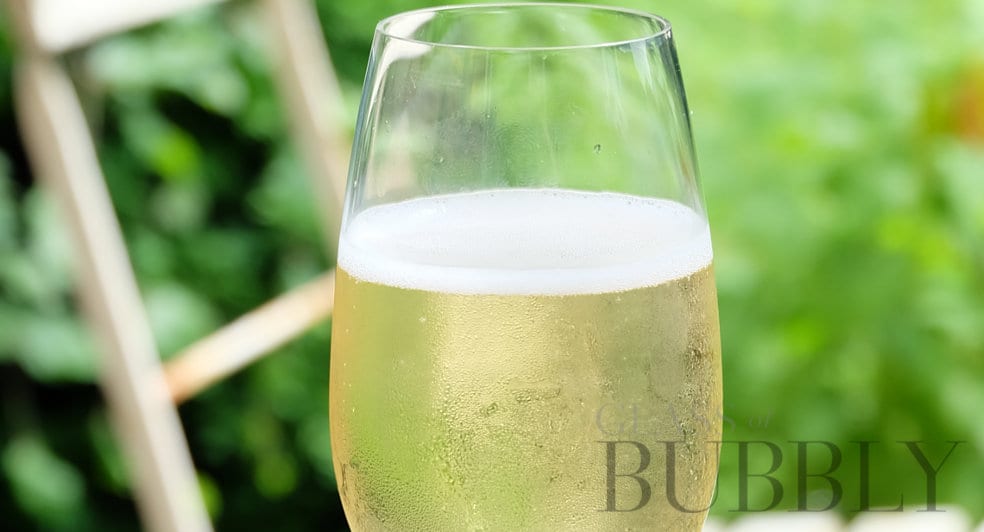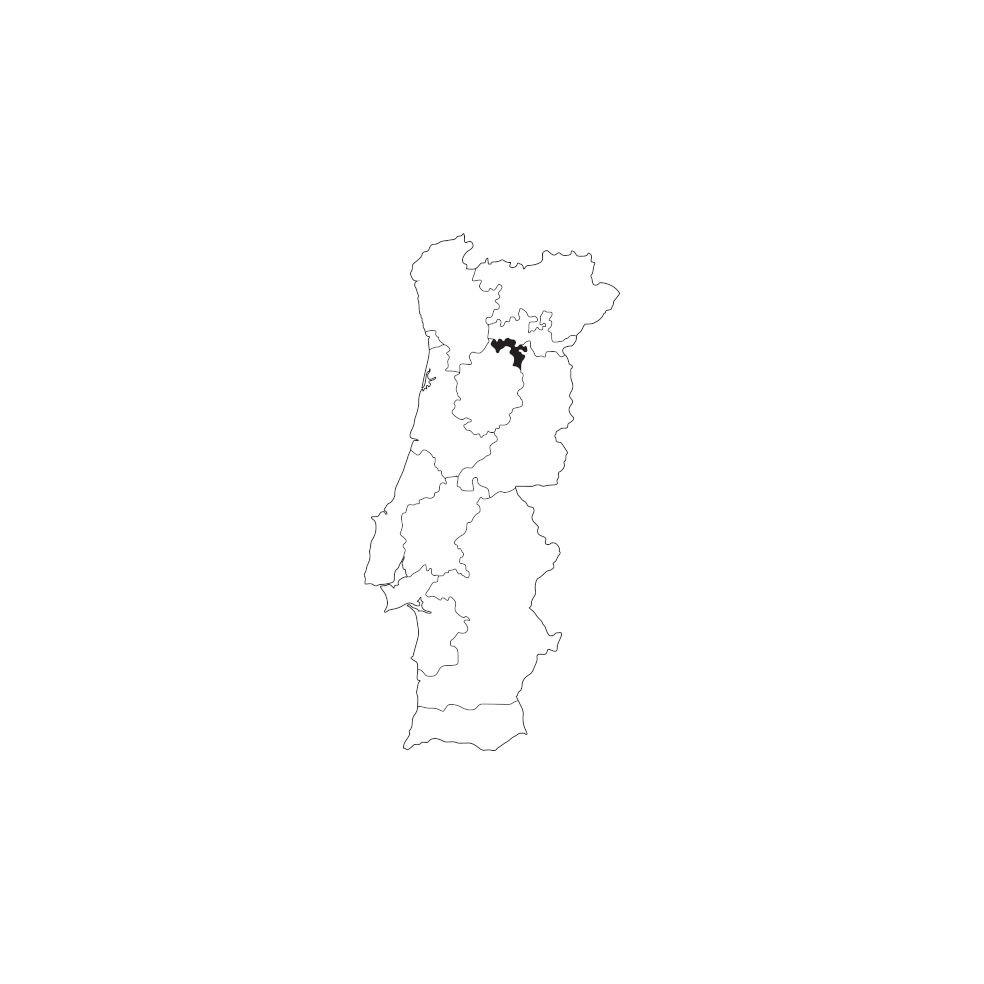Why are you Ignoring Portuguese Bubbly?
31st January 2023

The country’s traditional-method sparkling wines are an open secret to the locals. Here’s what you need to know to join the party…
The fun, fresh, lightly effervescent and highly gulpable Vinho Verde style with which most are familiar is all fine and good. We’ll briefly address it here—and I expect we’ve all shamelessly sloshed back our fair share at the beach or poolside—but Portugal also produces quite a bit of exceptionally delicious, seriously complex, and often shockingly inexpensive Champagne-method bottlings. They even have an entire DOC dedicated to it! So put down the Cava, loosen that collar, and let’s take an unpretentiously jovial jaunt through a few Portuguese regions frothing up some of the finest fizz on the Iberian Peninsula.
Despite its size, this is a country of tremendous topographical, geological, and climatological diversity, so there are nooks to be found for just about any variety and style of wine. And while fine bubbly is produced country-wide in some form or another, we’re going to focus on the three premier spots for sparkling wine production. These are the regions to know due to the volume of bubbly that is produced, the quality of it, the established history and the general availability in shops and on wine lists. Skipping north to south from verdant Minho (Vinho Verde), to mountainous Távora-Varosa, to ocean-dominated Bairrada, we’ll discover that the terroir of each is highly distinctive and has a pronounced impact on the finished product.
Far from being an afterthought or novelty, these sparklers are featured daily staples in many Portuguese restaurants, bottle shops, and homes. And for a seafood, pork, and pastry obsessed country, they offer the perfect pairing for damn near anything.
Vinho Verde DOC / Minho VR

Main White Varieties
Alvarinho (Albariño), Loureiro, Trajadura, Pedernã (Arinto), Avesso
Main Red Varieties
Vinhão, Touriga Nacional
Main Climate
Cooler and rainier with a mix of maritime, Mediterranean, and continental zones depending on exposure to the ocean influence
Main Soils
Granite with fertile topsoil
Traditional Method Pairings
Wide variety of cuisine, especially all forms of seafood, chicken and pork
Fizzy Fun Pairings
Backyard seafood boil, pimento cheese, tuna salad, flip-flops, sunshine, dads around a grill, boat shoes, red solo cups, Huey Lewis and The News
The verdant hills and cool, rainy countryside of this far northern reach of Portugal offer up a very unique place to produce wine. It’s a relatively large region, sandwiched between the Douro river to the south, the Spanish border to the north, the Atlantic to the west and traversed by two main rivers, the Minho and the Lima. Here the adjacent ocean sets the tone. As a result, you’ll see many small vineyards still trained overhead on pergolas, a resourceful way to keep the grapes from rotting while also making room for fruit and vegetable crops in the rich topsoil underneath. How crafty!
Most imbibers typically think of and refer to Vinho Verde as just that fun, cheap, fizzy summertime refresher. Why? Because that’s all that’s usually available in many export markets. However, it’s important to note that the Vinho Verde DOC (and the generalized Minho regional designation, or VR) is actually an area that encompasses a wide range of bottlings—from the aforementioned sunny staple, to complex traditional-method sparklers, to charmingly rustic still reds, to profound still white wines that can give the best of Alsace, Germany and Austria a run for their money.
They pump out the fun, fresh, fizzy stuff by the vat, and there’s no shame in enjoying it. With its low alcohol and miniscule price tag, it’s the ultimate easy/daytime/sunshine wine. It’s not meant to be profound, so enough about it. Simply buy it by the case and put it in your face.
The more serious, traditional-method juice—the style we’re really here to talk about—often has a fruitier edge than its counterparts from elsewhere, thanks to our ebullient friend Alvarinho (better known by its Spanish spelling, Albariño). That’s not to say it’s sweeter by any means, but it does have a slightly more tropical nature than most. The electrically zesty and minerally Loureiro variety tends to play second fiddle in these wines, but it offers a perfect counterbalance—Wonder Twin powers activate! The rosé versions often involve Vinhão, Touriga Nacional, or (gasp!) Pinot Noir…those French do get around. Soalheiro Alvarinho Bruto is a deliciously illustrative entry and relatively easier to find, but your exploration shouldn’t stop there.
While you’re not going to mistake any of these wines for Krug, you really can’t go wrong leveraging their charms for any occasion. Need an opening salvo for an evening gathering? Done. Something to go with that sumptuous seafood rice? Sold. A titillating and transcendent pairing with Thai? Bam!
Távora-Varosa DOC / Terras de Císter VR

Main White Varieties
Malvasia Fina, Cerceal, Gouveio (Godello), Bical, Chardonnay
Main Red Varieties
Touriga Franca, Tinta Barroca, Touriga Nacional, Tinta Roriz (Tempranillo), Pinot Noir
Main Climate
Higher-altitude continental climate with wide temperature swings
Main Soils
Granite with sand/clay
White/Rosé Pairings
All forms of seafood, chicken, charcuterie, cheeses and salads
Red Pairings
Pork, duck, wintery stews, charcuterie, brisket, venison and mushroom dishes
This is Portugal’s oldest officially demarcated sparkling wine region. It’s their thing. It’s what they do. Unlike any other region in the country, it is known almost exclusively for its traditional-method bubbly.
Packed with history, wine and otherwise, this little high-altitude, mountainous gem is tucked between Douro to the north and Dão to the south. Well-draining granitic soils give the wines concentration and intensity, while the cool nights help to retain acidity. The range of different grape varieties grown here also gives the winemakers a diverse palate of flavors and textures with which to work their sorcery. What the hell does all that wine-babble mean in my glass, you say? It means these wines are perfectly balanced, always fresh, wonderfully aromatic, and vibrantly flavored. Are they the stuff of legend? I wouldn’t go that far. But they are both approachably delicious and surprisingly classy.
All of this must mean they probably cost a lot, huh? Nope. Not a bit. They’re shockingly inexpensive. A supremely tasty bottle of single-vintage Terras Do Demo Malvasia Fina Bruto from the regional co-op will set you back a whopping €10 in-country. Is it my “house” bubbly? Yeah! Does it always make me happy? Yeah! Do I sometimes open it on a Monday night because I can? Of course!
The grande dame of the region is Murganheira. Their ancient Cistercian caves usher forth some downright sublime bottlings of many different styles—several of which can age into dreamy perfection. Fortunately, this fancy lady isn’t much more demanding on your bank account than the regional co-op. Classy and a cheap date? Thank you very much.
And don’t pass up the sparkling red. It’s great! I know, you’re skeptical. But trust me, it’s one of those “it sounds so weird, but it’s actually so good” things. And wow, does it ever pair beautifully with traditional Portuguese duck rice.
Bairrada DOC / Beira Atlântico VR

Main White Varieties
Bical, Fernão Pires (Maria Gomes), Arinto, Cercial, Chardonnay
Main Red Varieties
Baga, Alfrocheiro, Tinta Pinheira (Rufete), Touriga Nacional, Pinot Noir
Main Climate
Cool Atlantic-dominated maritime
Main Soils
Chalky clay-limestone and sand
White/Rosé Pairings
Just about anything. Seriously. Much like Champagne…but with a colorful, salty Portuguese accent.
This region is the big kahuna of Portuguese traditional-method sparkling wine, which is fitting since it’s right by the coast in this surfer’s paradise. Over half of the country’s bubbly comes from here. Despite being far better known for its still red wine from the regal Baga variety, the region nonetheless produces Portugal’s entry into the international fizz Olympics. This is really good stuff, serious stuff, but without the serious price tag. Praise be!
Sitting on various combinations of chalky limestone, clay, and sand, these vines feel the full brunt of the Atlantic Ocean. It’s basically an overgrown beach. Growing conditions can be difficult at times, with winds and rain frequently sowing chaos during harvest. It takes skill, attention to detail and hard work in the vineyard to keep the vintage on track, but the end result is well worth it. This combination of factors produces some of the most graceful and structured wine in Portugal, whether it be red, white, rosé, or bubbly.
The entourage of diverse Portuguese varieties grown here, sometimes with a cameo from our French friends Chardonnay and Pinot Noir, combines with chalky clay soils and salty breezes to lend the wines rich fruit complexity and a minerally backbone. The Atlantic ocean rules the climate, and you can feel its personality in every sip. I would literally, and do literally, drink this stuff with anything…or without anything. It’s like the super-classy Swiss army knife of Portuguese wine. French toast, steak, shellfish, dessert, bar peanuts, my mom’s holiday chex-mix, it doesn’t matter. It always works, and it always hits the spot.
The legendary name in this region is Pato (translating to “duck”), with several members of the family running their own distinct wineries producing sublime juice. Usually recognizable by some form or mention of duck on the label, any of these examples—whether from Pato father or Pato daughters—will make an exquisite initial foray into the region. After you quack into a bottle, be sure to waddle your way to other producers as well. While you’ll find them all birds of a feather, you wouldn’t want to duck intra-regional diversity. Some can really make a splash. (I can do this all day.)
Now’s the time…
…because Portugal is on the rise in every way. As its culture’s global debutante ball has been unfolding, we’ve seen some of its wines and regions go from obscure footnotes to fashionably hot tickets. Baga from Bairrada, fun-fizzy Vinho Verde, Alentejo, and the grand reds of Douro are all now common topics in the greater wine conversation. And yet, here are these glorious traditional-method bottlings languishing inexpensively in the shadows. Lucky us!
Now that you’re in on the open-secret, it’s the ideal moment to seek them out. Nobody puts bubbly in a corner! Escort them to the dance floor and finally discover the Portuguese-accented beauty you’ve been missing.
![]()
John Sumners
California and Portugal specialist currently residing in Lisbon. Wine industry veteran and writer. Author of There’s More Than Port In Portugal: The Unpretentious Guide to Portuguese Wine. Instagram & Twitter - @grapeguzzling
